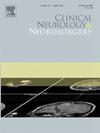日本各都道府县抗癫痫非专利药处方量与临床癫痫医生数量之间的相关性:利用全国索赔数据库进行的描述性研究
IF 1.6
4区 医学
Q3 CLINICAL NEUROLOGY
引用次数: 0
摘要
目的虽然非专利药对降低医疗成本至关重要,但在癫痫治疗中使用非专利药仍是一个争论不休的话题。本研究中,我们利用日本全国健康保险理赔和特定健康检查数据库(NDB)开放数据分析了非专利药的处方趋势。方法从日本全国健康保险理赔和特定健康检查数据库(NDB)开放数据中提取了2017-2021年非专利药处方数量,并按都道府县地区、性别和年龄对每种药物的数据进行了分层,以便分析各因素的影响。我们分析了非专利抗癫痫药物(ASM)的处方量与每 10 万人中在日本癫痫协会注册的临床癫痫医师人数之间的相关性。结果 2021 年,非专利抗癫痫药物的处方量占 49%,而其他药剂的处方量占 70-80% 之间。值得注意的是,在 15 岁儿童的处方中,非专利药约占 20%,明显低于其他年龄组。按都道府县进行的分析表明,ASM 的处方量与日本各都道府县的临床癫痫医师人数呈负相关(R = -0.47,p <0.01)。因此,日本的临床癫痫专家根据日本癫痫治疗指南开具抗癫痫药处方,该指南不建议使用非专利药。本文章由计算机程序翻译,如有差异,请以英文原文为准。
Correlation between prescription volumes of generic antiepileptic drugs and the number of clinical epileptologists across prefectural regions in Japan: A descriptive study using a national claims database
Purpose
Although generic drugs are essential in reducing medical costs, their use in epilepsy therapy remains a subject of ongoing debate. In this study, we analysed prescription trends of generic drugs using data from the National Database of Health Insurance Claims and Specific Health Checkups (NDB) Open Data Japan.
Methods
The number of generic drug prescriptions from 2017–2021 was extracted from the NDB Open Data Japan, with data for each medication stratified by prefectural region, sex, and age, allowing for the analysis of the impact of each factor. We analysed the correlation between the prescription volumes of generic antiseizure medications (ASMs) and the number of clinical epileptologists registered with the Japan Epilepsy Society per 100,000 population.
Results
In 2021, the prescription volume of generic ASMs was 49 %, whereas that for other pharmacological agents was between 70–80 %. Notably, for children < 15 years of age, generics made up approximately 20 % of prescriptions, which was significantly less than that in other age groups. Analysis by prefecture revealed a negative correlation between prescription volumes of ASMs and the number of clinical epileptologists across prefectural regions in Japan (R = −0.47, p < 0.01).
Conclusion
Our findings indicate that the higher the proportion of clinical epileptologists in each prefecture, the lower the number of prescribed generic ASMs. Clinical epileptologists in Japan therefore prescribe antiseizure agents in accordance with the Japanese epilepsy treatment guidelines that do not recommend the use of generic agents.
求助全文
通过发布文献求助,成功后即可免费获取论文全文。
去求助
来源期刊

Clinical Neurology and Neurosurgery
医学-临床神经学
CiteScore
3.70
自引率
5.30%
发文量
358
审稿时长
46 days
期刊介绍:
Clinical Neurology and Neurosurgery is devoted to publishing papers and reports on the clinical aspects of neurology and neurosurgery. It is an international forum for papers of high scientific standard that are of interest to Neurologists and Neurosurgeons world-wide.
 求助内容:
求助内容: 应助结果提醒方式:
应助结果提醒方式:


